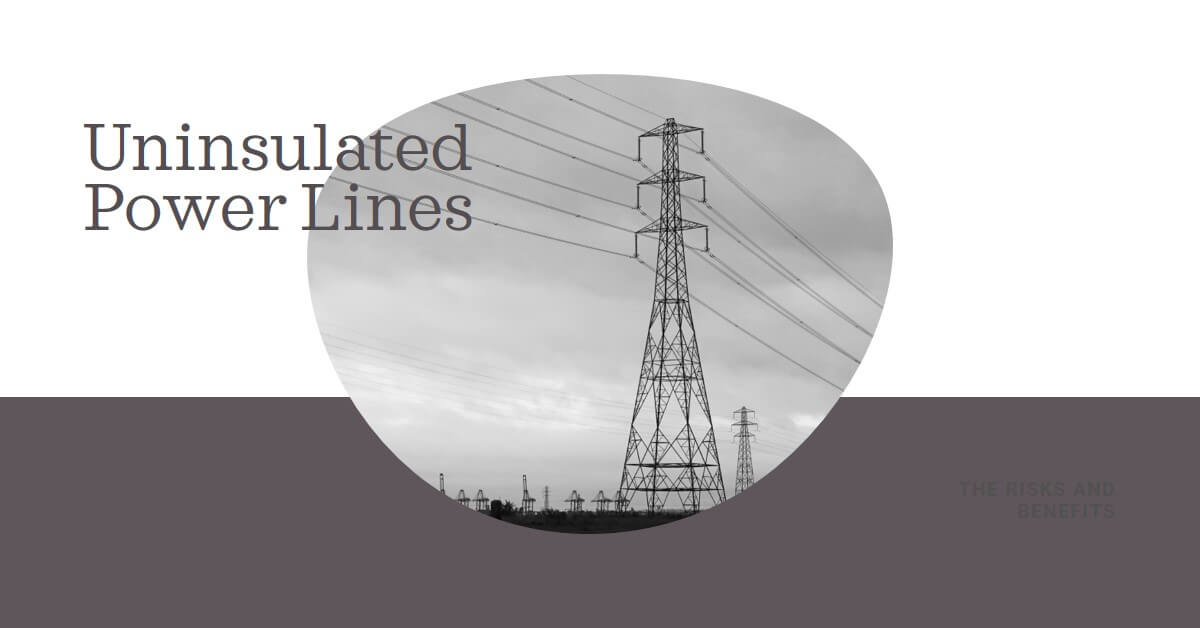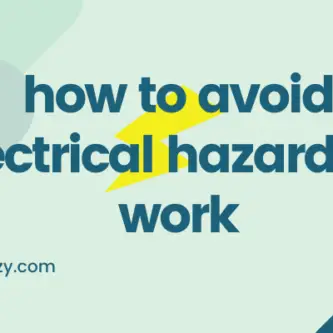Image: “Article Feature Image” by Bing is licensed under CC BY-NC-SA 4.0. Source: Bing Graphic Art. License: CC BY-NC-SA 4.0.
Overhead power lines are a common sight in our communities, delivering electricity from power plants to our homes and businesses.
While these power lines may seem dangerous, they are actually designed to be safe and reliable.
One question that often comes up about overhead power lines is why they are not insulated. The main answer to this question is that historically, practically, and economically, insulating overhead power lines would be difficult, expensive, and not necessarily effective.
In this article, we will explore the reasons why overhead power lines are not insulated and the alternatives that exist for electricity transmission.
How Overhead Power Lines Work
To understand why overhead power lines are not insulated, it’s important to understand how they work.
Overhead power lines are designed to carry large amounts of electrical current from power plants to consumers.
The power lines consist of three main components: the conductors, the insulators, and the support structures.
The conductors are the wires that carry the electrical current. These wires are made of a high-conductivity material, such as aluminum or copper, that is able to transmit large amounts of electricity efficiently.
The insulators are the materials that surround the conductors and prevent them from touching each other or the support structures.
Insulators are usually made of ceramic, glass, or composite materials that are able to withstand high voltages without breaking down.
The support structures hold the conductors and insulators in place and are typically made of metal or wood.
They are designed to withstand the weight of the conductors, as well as environmental factors such as wind, rain, and snow.
The Hazards of Overhead Power Lines
Despite their design, overhead power lines can pose hazards to people and the environment.
The most significant hazard is the risk of electrocution, which can occur if someone comes into contact with a live power line.
In addition, overhead power lines can cause fires and explosions if they come into contact with trees, buildings, or other objects.
They can also interfere with communication systems and have been known to cause harm to wildlife.
Why Overhead Power Lines Are Not Insulated
| Reason | Explanation |
|---|---|
| Historical factors | Overhead power lines were developed before insulation materials were widely available. |
| Practical factors | Insulating overhead power lines would be difficult and expensive |
| Economic factors | Insulating overhead power lines would be cost-prohibitive and result in higher electricity rates for consumers. |
The question remains: why are overhead power lines not insulated? The answer lies in a combination of historical, practical, and economic factors.
Historically, overhead power lines were developed before insulation materials were widely available.
In addition, the open design of overhead power lines allows them to dissipate heat more efficiently, which helps to prevent overheating and damage to the conductors.
From a practical standpoint, insulating overhead power lines would be difficult and expensive. Because of their height and the distance between support structures, insulating overhead power lines would require a large amount of insulation material.
This would make the power lines heavier and more difficult to support, which would require additional support structures to be built.
Economically, insulating overhead power lines would be cost-prohibitive. According to the Electric Power Research Institute (EPRI), insulating overhead power lines would cost between $1.3 million and $3.1 million per mile. This cost would be passed on to consumers in the form of higher electricity rates.
For more information about overhead power lines read my article on my other site: Overhead power lines: Answers for Beginners.
Alternatives to Overhead Power Lines
While overhead power lines are the most common way to transmit electricity, there are alternatives that exist.
One alternative is underground power lines, which are buried underground and are therefore not susceptible to the same hazards as overhead power lines.
However, underground power lines are more expensive to install and maintain and can be more difficult to repair if they are damaged.
Another alternative is microgrids, which are small-scale power grids that can operate independently of the main power grid.
Microgrids can be used to provide electricity to specific areas or communities and can be powered by renewable energy sources such as solar or wind power.
Microgrids are becoming increasingly popular in areas where the main power grid is unreliable or expensive to maintain.
Renewable energy sources are another alternative to overhead power lines. Solar, wind, and hydroelectric power can all be generated locally and delivered to consumers through small-scale distribution systems.
These renewable energy sources are also cleaner and more sustainable than traditional fossil fuels, which makes them an attractive option for many consumers.
Conclusion
In conclusion, overhead power lines are not insulated for a variety of reasons, including historical, practical, and economic factors.
While they can pose hazards to people and the environment, they are designed to be safe and reliable.
However, alternatives to overhead power lines do exist, such as underground power lines, microgrids, and renewable energy sources.
As our communities continue to grow and evolve, it’s important to consider these alternatives and determine which ones are best suited to our needs.
you work With Electricity! Don’t leave empty-handed!
Looking to stay ahead of the game in the world of electrical engineering? Subscribe to my YouTube channel and gain access to exclusive content you won’t find anywhere else!
The staff I recommend (Amazon Affiliate Links to products I believe are high quality):
- Economy 120 Volt/60Hz AC Power Source – Step-Down Voltage & Frequency Converters 1800W
- UNI-T Digital Multimeter Tester UT139C
- 50-Amp Extension Cord for RV “100ft”
- Voltage Stabilizer 110/220v
- Hair Dryer “best selling“
- TOSHIBA EM131A5C-BS Countertop Microwave Ovens
Disclaimer: This contains affiliate links to Amazon products. I may earn a commission for purchases made through these links.


